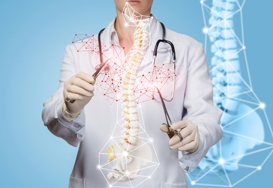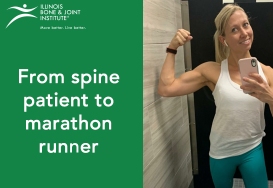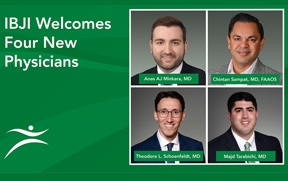Degenerative disc disease is a condition that causes a weakening of one or more vertebral discs. There is some confusion around this spine condition as it is not a disease, and everyone will experience degeneration in their disc due to aging.
Many people will have no pain at all, and others will have neck and back pain (lower back pain is very common). Degenerative disc disease can be very painful and turn into a chronic pain condition if left untreated.
Read on to learn the symptoms and treatments for degenerative disc disease and where you can go for help.
Degenerative Disc Disease Symptoms
The signs of degenerative disc disease can vary from person to person. Still, there are some prevalent symptoms that patients complain about, including:
- Lower back pain that radiates to the hips or other areas
- Numbness or tingling in the legs
- Low back pain that gets worse when sitting
- Pain in the buttocks or thighs while walking or standing
- Pain in the low back or neck when bending, twisting, or lifting
These symptoms alone are not enough to assume you have degenerative disc disease. If you have some of the above symptoms, visit an orthopedic physician or schedule an MRI.
Once the physician has the MRI results, she will be able to see if you have degeneration in your disc visually and will know if the symptoms are consistent with degeneration and the pain you are experiencing.
Treating Degenerative Disc Disease
There are many non-surgical options to treat degenerative disc disease, including nonsteroidal anti-inflammatory drugs, physical therapy, and spinal injections. Your orthopedic physician will usually start you with a pain management plan based on your response to the treatment.
For instance, if you take nonsteroidal anti-inflammatory medication and rest and ice your affected area to a positive result, the physician may not recommend any other treatment.
However, if the anti-inflammatory medication does not work for you, she may recommend you progress to physical therapy treatment. The physical therapist will use functional exercises to strengthen your muscles and improve your flexibility and range of motion.
If the physical therapy does not work for you, the physician may recommend pain injections or surgery if the chronic pain has continued to progress over some time (like three to six months).
There are many different types of spine surgery available for degenerative disc disease patients, but the most common is fusion surgery, which effectively reduces or eliminates pain. Of course, the kind of treatment—conservative or surgical—will need to be discussed with your physician.
Schedule an Appointment
Getting treatment or surgery on your back is a big undertaking. The back and spine specialists at IBJI are among the best in the Chicagoland area.
If you're experiencing any of the above symptoms, contact us immediately or find a location near you and Schedule online.
*This content is for information only and is not intended to replace the diagnosis, treatment, or medical advice from your treating healthcare professionals. The content does not provide medical advice, does not constitute the practice of medicine or other healthcare professional services, and does not create a doctor-patient relationship. You should not rely on this information as a substitute, nor does it replace professional medical advice, diagnosis, or treatment. If you have concerns or questions, seek the advice of your healthcare professionals. If you think you may have a medical emergency, call your doctor or 911 immediately. Do not rely on electronic communications or communicate through this website for immediate, urgent medical needs. This website is not designed to facilitate medical emergencies. The use of the information is at the reader’s own risk. The links are provided for information and convenience only. We cannot accept responsibility for the sites linked or the information found here. A link does not imply an endorsement of a site.





